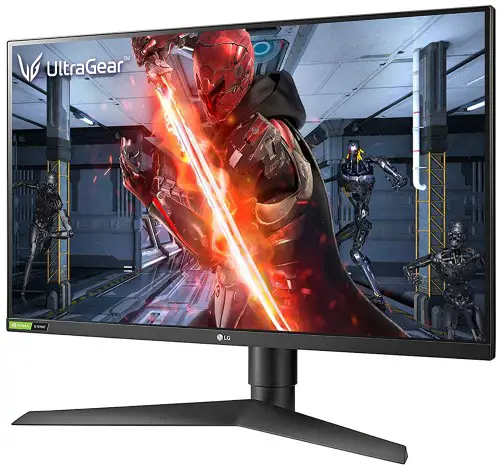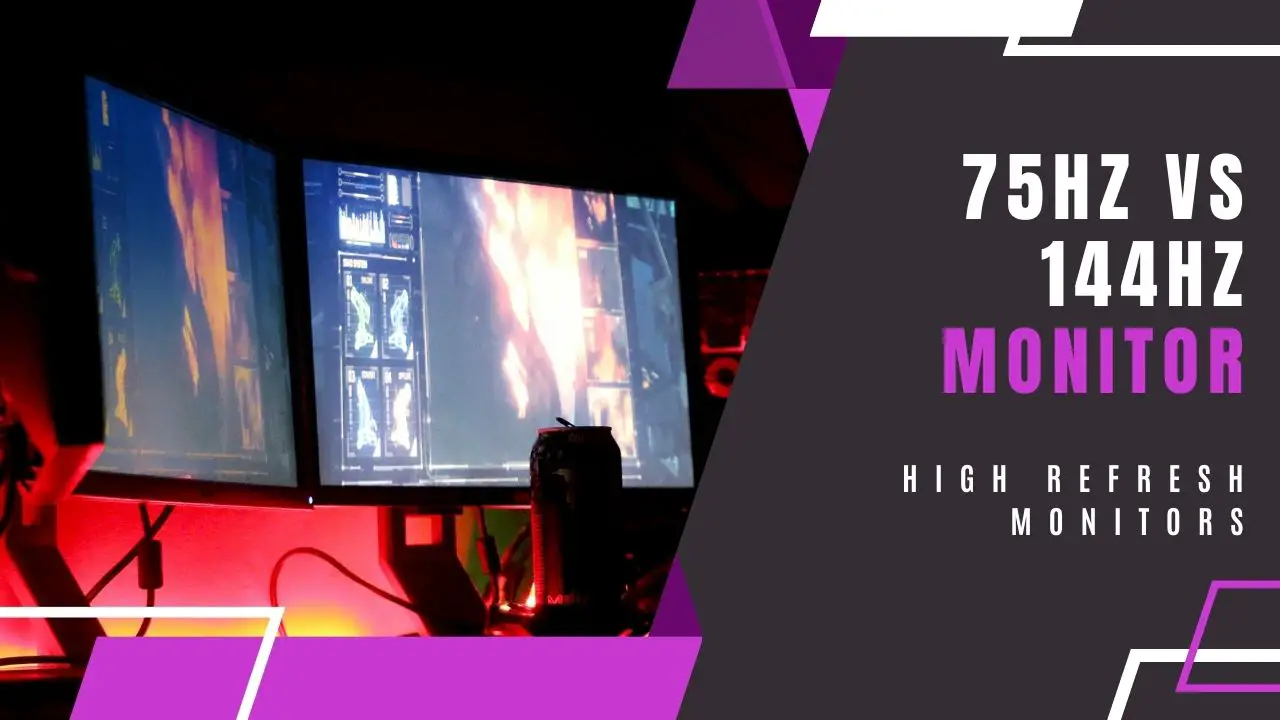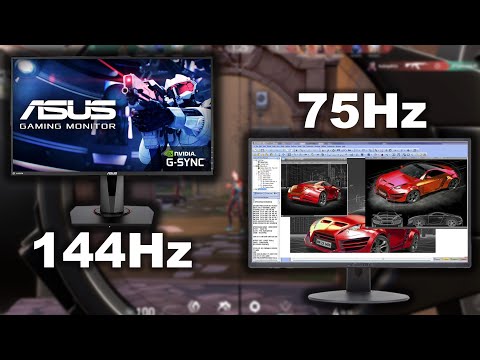Are you ready to take the plunge into the world of ultrawide, high-refresh gaming monitors? If yes, then you’ve come to the right place! In this blog post, let’s explore what distinguishes a 75Hz monitor from a 144Hz monitor and how higher refresh rates can improve your gaming experience.
Having a higher refresh rate monitor allows for better visuals and smoother movement of objects on the screen. The two most common refresh rates found on computer monitors are 75 Hertz (Hz) and 144 Hz. This guide will compare and contrast the differences between the two types of monitors, helping shoppers to make an informed choice when selecting a monitor for gaming purposes.
Understanding the difference between 75Hz and 144Hz starts with understanding what refresh rate means. The refresh rate, measured in Hertz (Hz), is the maximum number of times your monitor refreshes its image each second, which is represented by cycles per second (also known as hertz). A higher refresh rate allows images to update more frequently, meaning smoother visuals and lower input lag when watching video content or playing video games.
75Hz monitors are quite common in the market and are considered to give Decent performance for gaming enthusiasts at an affordable price range, but don’t expect too much from them. In contrast, 144 Hz Monitors provide an ultra-smooth experience for gamers who want to push their gaming rig further, allowing them to take full advantage of their rig’s performance capabilities and providing a more enjoyable experience through minimal delay in response time.
What is a 75Hz Monitor?

A 75Hz monitor is a display device with a vertical refresh rate of 75 Hz. It is a popular choice among gamers looking for a smooth gaming experience at an affordable price. A higher refresh rate means smoother visuals, and this particular model promises to deliver that in spades.
The main feature of a 75Hz monitor is the ability to produce more frames per second than standard monitors. This works by refreshing the screen images faster and therefore resulting in less motion blur during fast-moving games or videos. By using this type of updated technology, you can experience clear images even when high amounts of action are onscreen.
Additionally, these monitors have lower input lag as compared to other models due to the quick response time afforded by their high refresh rate. The reduced input lag creates less delay between information entered on the keyboard and mouse and appearing on the display and makes for improved gameplay performance overall. For this reason, many avid gamers prefer 75Hz monitors over their standard counterparts when selecting a new gaming monitor setup up or a replacement monitor for their existing system.
What is a 144Hz Monitor?

A 144Hz monitor is a type of LCD or LED flat panel display technology that is capable of refreshing the image on your screen up to 144 times every second, which is nearly double the refresh rate of a 75 Hz monitor. Increasing the refresh rate of a display reduces any blurring or latency that can be seen in games and movies, resulting in an incredibly smooth viewing experience.
A 144Hz monitor takes advantage of higher video frame rates to provide an even more dynamic and detailed picture than what can be produced by a standard 75Hz monitor. 144Hz monitors have become increasingly popular among gamers due to their exceptional capabilities when playing fast-paced, highly graphic games. The ultra-low input lag and improved motion speed offered by these displays give gamers an edge that they wouldn’t otherwise have.
In addition, some models are now able to support up to 144fps (frames per second), making them suitable for gamers looking for the ultimate in gaming performance. If you’re in the market for a new display and want great picture quality with unparalleled motion clarity, consider investing in a 144Hz monitor. With its plethora of features and advantages, it’s easy to see why these displays are so sought after!
Advantages of 75Hz Monitor
A 75Hz monitor is an excellent choice for gamers looking to jump right into the world of gaming without breaking the bank. While it falls short of the blazing speeds a 144Hz monitor can offer, it still holds several distinct advantages that make it a viable option.
Perhaps the most obvious advantage of a 75Hz monitor is its cost. Since they are not capable of reaching high refresh rates like 144Hz monitors, they tend to be cheaper overall. This makes them much easier to afford and also reduces their environmental footprint. Additionally, since most games don’t require refresh rates above 100 Hz (according to PC Gamer), a 75 Hz monitor should still be able to provide smooth gaming performance without any noticeable tearing or lag.
Since the resolution for 75Hz monitors isn’t as advanced as what you’d find with a 144Hz monitor, you won’t have to worry about your graphics card being underpowered either. That makes them even more affordable! Lastly, 75 Hz monitors are often equipped with features such as adaptive sync technology, which further enhances your gaming experience by eliminating screen tearing and providing smoother motion.
In summary, while 75Hz monitors do not offer extreme refresh rates as 144Hz models do, they can still provide a great gaming experience at an affordable price point. With features like adaptive sync technology and reliable performance on less demanding titles make them even more desirable options for those looking to get into PC gaming on a budget!
Advantages of 144Hz Monitor
A 144Hz monitor is designed to refresh the screen up to 144 times per second, which provides a smoother gaming experience than a typical 60Hz monitor. The higher refresh rate makes onscreen motion appear more fluid and reduces tearing and stuttering from fast-paced, action-filled games.
With a better motion resolution, players may be able to respond faster, which can result in more accurate and timely decisions when playing games. Additionally, since more frames are being produced in the same amount of time (as opposed to 75Hz monitors) gamers will typically experience less input lag when using a 144Hz display. This type of monitor is also beneficial for competitive gaming since it gives players an edge in processing game data quicker than their opponents.
Another advantage of having a quickly refreshing screen is that it will reduce eye strain while you’re focusing on or following objects in your game that generally move faster and farther across the screen (e.g., projectiles in FPS games or characters in certain strategy games). Finally, due to its increased capability of displaying frames at any given moment, a 144Hz panel will provide an overall sharper image quality compared to the majority of 60Hz screens.
Disadvantages of 75Hz Monitor
There are several disadvantages to using a 75Hz monitor as opposed to a higher-end 144Hz monitor. The first is that you may experience slower frame rates, noticeable delays, and frame skipping in fast-paced games due to the lower refresh rate, which will make the gaming experience less enjoyable.
Additionally, with a 75Hz monitor, you may find that your graphics card needs to work harder to render the same image at an adequate level of quality. This can be especially noticeable when using older graphics cards or ones that are not capable of sustaining a high enough framerate at higher resolutions.
Furthermore, because 75Hz monitors offer lower refresh rates than their 144Hz counterparts, they may not be able to support advanced graphics options like anti-aliasing or adaptive sync as well as higher-end monitors would thus lead to less detail and fidelity on the visuals side of things.
Finally, since most gamers these days prefer playing in wide resolutions or ultrawide resolutions on higher refresh rate monitors, playing on a 79 Hz monitor would likely be an unpleasant experience for many players.
Disadvantages of 144Hz Monitor
The main disadvantage of a 144Hz monitor compared to a 75Hz monitor is the cost: because 144Hz monitors are more advanced than their 75Hz counterparts, they tend to be naturally more expensive. Also, due to the higher refresh rate, there will normally be less color accuracy in a 144 Hz monitor.
Moreover, a 144Hz monitor requires up-to-date hardware and cables with the right specs to take full advantage of its capabilities. Depending on the hardware connected to it, there may also be significant input lag which could detract from any benefits it provides.
Lastly, while gaming on a 144 Hz monitor can be enjoyable, other activities such as movies or general web browsing won’t benefit from the higher refresh rate so ultimately it may just be overkill for some people.
Conclusion
The debate of 75Hz vs 144Hz can be confusing for some gamers. It’s important to understand the pros and cons of each refresh rate before making a purchasing decision. At the end of the day, a higher Hz monitor won’t necessarily make you a better gamer, but for those who are serious about competitive gaming, the faster refresh rates offered by 144Hz monitors might be the best choice.
The extra selectability combined with higher refresh rates will provide an advantage that casual gamers may not need or want. For those players who want an attractive image quality or prefer traditional gaming over eSports titles, 75Hz monitors might be a better fit. The additional response time provided by 75Hz monitors might make them more suited to these types of gamers than faster 144 Hz displays.
Ultimately, it’s up to you to decide which monitor fits your needs best — both 75Hz and 144Hz monitors provide unique advantages that can affect your overall gaming experience in different ways.








